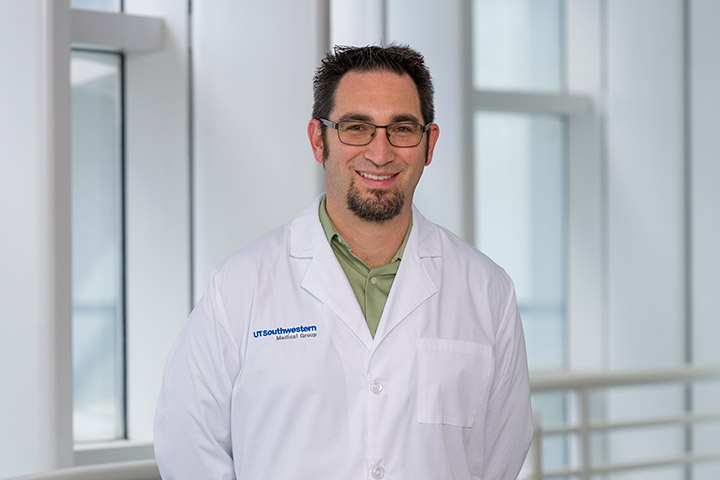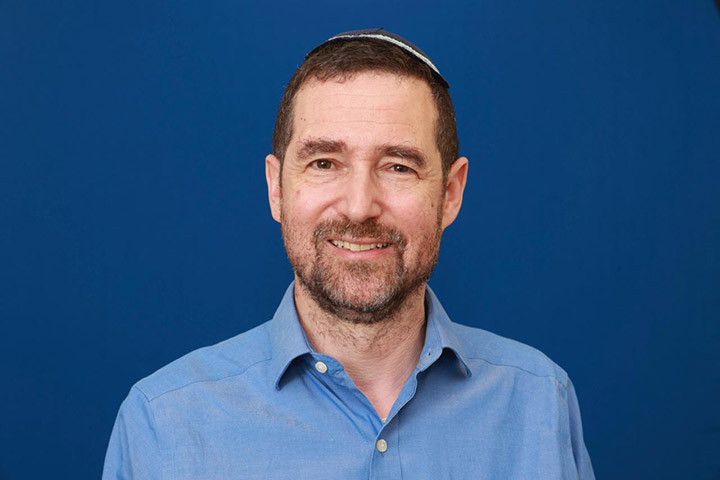Can SBRT Become More Effective?

Dr. Todd Aguilera, UT Southwestern Medical Center
Radiation has become a key part of therapy for pancreatic cancer patients with locally advanced disease that can’t be cured through surgery.
But typical radiation doses are not enough to achieve a meaningful response in most patients. Researchers at The University of Texas MD Anderson Cancer Center (Houston, Texas) and Moffitt Cancer Center (Tampa, Florida) are testing a new approach that combines sensitizing drugs with stereotactic body radiation therapy (SBRT). SBRT, also referred to as stereotactic ablative radiation therapy (SABR), uses a much more focused beam of radiation delivered over a shorter time frame, usually five days compared to several weeks with traditional radiation.
The technology allows clinicians to shrink tumors more effectively and achieve more significant responses while sparing healthy surrounding tissue. SBRT has also allowed more patients to receive surgery. The treatment does not come without its side effects—and there has been a need to reduce these effects—as well as making the radiation more toxic to the tumor.
A Drug To Test
The hope is that a drug called avasopasem manganese might be effective at reducing side effects while increasing radiation’s ability to impact the tumor. Part of a class of drugs known as superoxide dismutase mimetics, avasopasem is designed to transform the superoxide radicals produced by radiation therapy (the culprit for harming normal tissue near the radiation site) into hydrogen peroxide, which is more toxic to tumors than healthy tissue.
If effective, the drug might be able to mitigate some of the side effects of radiation therapy while simultaneously enhancing the toxicity of radiation therapy to the tumor and potentially reducing the radiation dose necessary for significant shrinkage.
Early studies suggest an additional synergy between SBRT and avasopasem. When higher doses of radiation were given, the drug increased the ability of healthy cells to deal with the hydrogen peroxide, while simultaneously increasing its buildup in the cancer cells.
Initial Results
The results of a phase Ib/II study of the combination therapy were published earlier this year in The Lancet Oncology.
Led by the late Cullen Taniguchi, M.D., Ph.D., associate professor of Gastrointestinal (GI) Radiation Oncology at MD Anderson, and Sarah Hoffe, M.D., section head of GI Radiation Oncology at Moffitt, the trial included 42 eligible patients, from six U.S. centers, with borderline resectable or locally advanced disease who had received at least three months of chemotherapy.
The participants were randomly assigned to receive intravenous avasopasem at 90mg or placebo directly prior to each fraction of SBRT.
The primary purpose of the trial was to identify the optimal dose of SBRT with avasopasem or placebo, as well as any related toxicity. But it also found that the SBRT and avasopasem combo yielded higher progression-free survival (12.4 months in the combination arm compared with 3.4 months in the placebo arm) and overall response rate (88 percent in the treatment arm and 67 percent in the placebo arm).
In the avasopasem group, eight out of 10 patients (80 percent) exhibited an efficacy response at 50 Gy (Gray, abbreviated as Gy, is the unit measuring radiation dosing), and all six patients (100 percent) demonstrated a response at 55 Gy. In contrast, in the placebo group, three out of six patients (50 percent) showed a response at 50 Gy, and seven out of 10 patients (70 percent) exhibited a response at 55 Gy.
In addition, five out of 24 patients (21 percent) in the avasopasem group were later able to undergo a complete surgical resection, whereas only one out of 18 patients (6 percent) in the placebo group was able to do so.
No dose-limiting toxicities and no treatment-related adverse events of grade three or higher were observed in either arm. Treatment-related adverse events of any grade were similar, at 83 percent in the treatment arm and 89 percent in the placebo arm.
Next Steps
The results of the phase Ib/II study led to an expanded phase II trial of an updated selective dismutase mimetic, rucosopasem, which was formulated to enable more rapid infusions.
The GRECO-2 trial was recently closed by drugmaker Galera Therapeutics. Patients accrued and treated as part of the trial before its closure will continue to be monitored, but it is unclear when outcome data might become available.
“From my perspective, this is a promising approach, and I have patients who were treated in the trial who are doing fantastic. The results of the recently published pilot trial look good, and hopefully we will be able to say more definitively if this is a good option if more data becomes available from GRECO-2,” says Todd A. Aguilera, M.D., Ph.D., of the Harold C. Simmons Comprehensive Cancer Center, and the principal investigator at the Aguilera Lab, at UT Southwestern Medical Center, Dallas, Texas. He was a site leader for the trial and co-author on the Lancet study.
The Galera trials involved some of the highest doses of radiation ever given to pancreatic cancer patients. Promising results from other trials like the stereotactic MR-guided on-table adaptive radiation therapy (SMART) trial for borderline surgically removable and locally advanced pancreatic cancer have given renewed hope for the use of dose-escalation radiation therapy, Aguilera adds.
Additional avenues for future study include seeing whether such therapies should also be given before surgery (neoadjuvant) for those with surgically removable tumors, or as a treatment to kill remaining cancer cells after initial treatment for limited metastatic cancer that may remain in a few distant sites (oligometastatic disease).
Aguilera led a study to see whether ablative radiation therapy in oligometastatic pancreatic cancer could help delay the appearance of five or more new metastases, limit the need for chemotherapy, and improve outcomes. In patients with oligometastatic pancreatic cancer, SABR was performed on all active metastatic sites. The results showed promise in improving outcomes, and Aguilera is now hoping to expand the study into a national trial.






